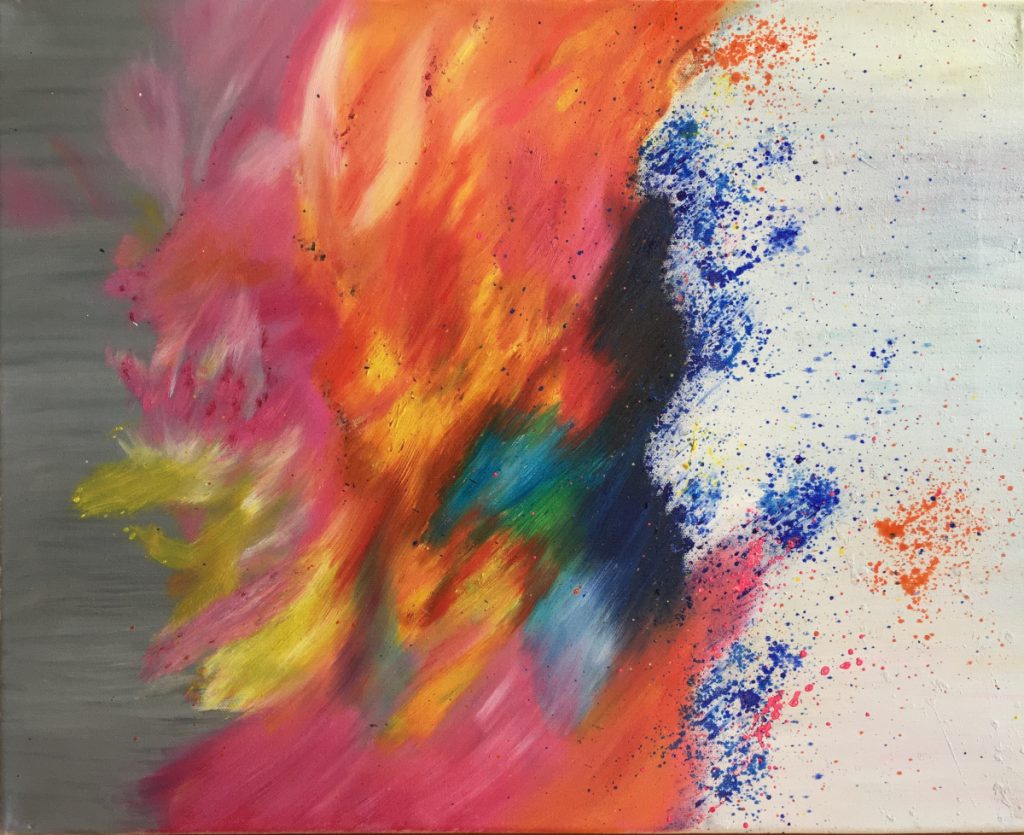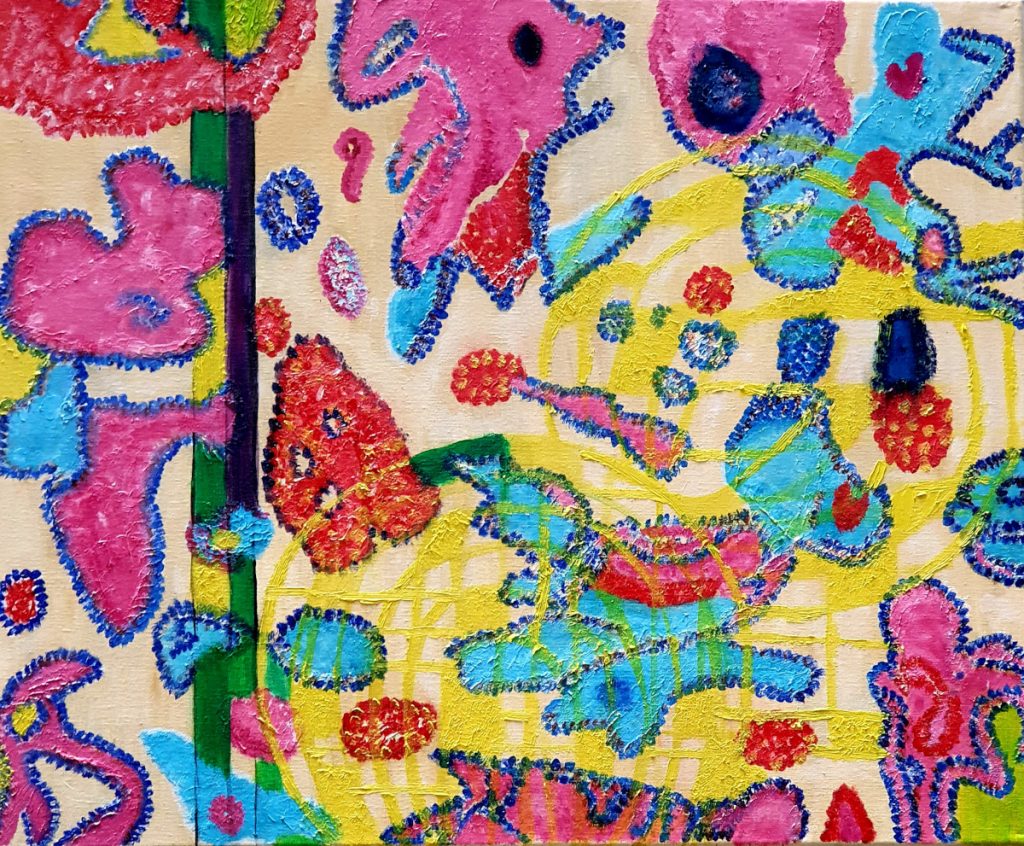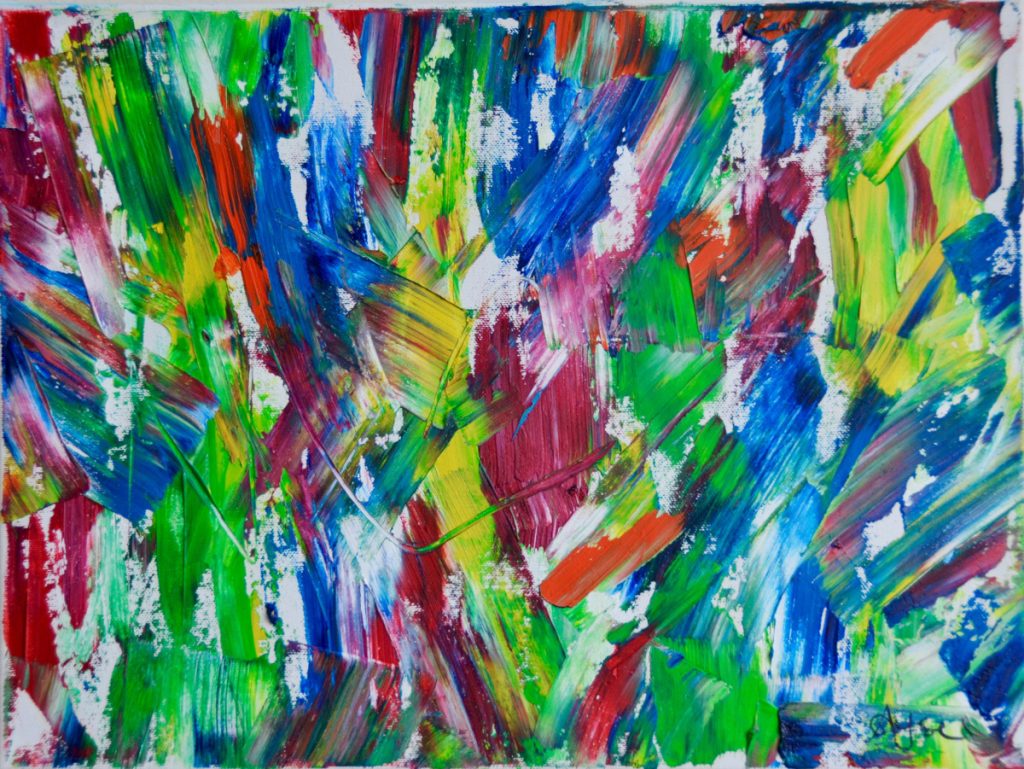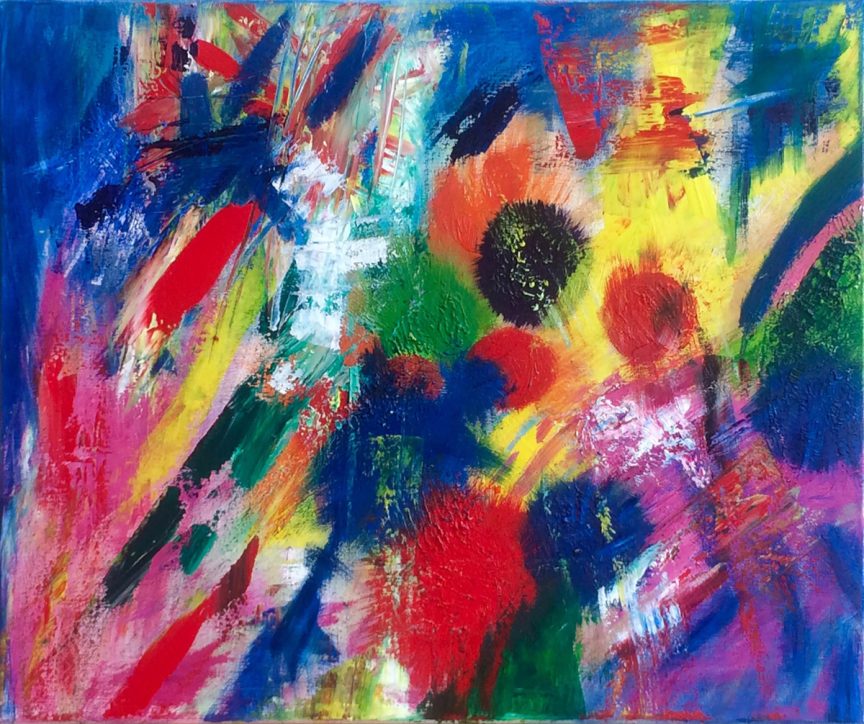Name: Ayse U. Akarca
Which came first in your life, the science or the art?
Art and science are not mutually exclusive to me. However, joining these two careers took a lot of time. Initially, my career as a research scientist had to come first, as this needed more focus and time. After I had my first scientific publication, which was on hairy cell leukemia, I was so incredibly overjoyed about my achievement that I very much wanted to capture that feeling forever. This is when I decided to get out my art tools and create my first piece called Hairy Look. In a sense, science triggered the artistic spark back into my life and continues to influence my work.

The colour splash represents the layering and staining technique that is done in histopathology. Each colour represents the specific target molecule that Ayse is trying to investigate. When translating the results of this project onto canvas, the colour combinations worked effortlessly bringing more focus onto the specificity and the robustness of the multi-staining technique.

In Ayse’s research, tumour tissues must be dyed with different dyes, and at times cross-reaction can occur—at this point she will know that the experiment has failed. It is an image of a moment of abandonment, as the experiment must end and be repeated. At one point, a specific staining case had to be repeated around 20 times, taking months to achieve optimum results. During this period, she started working on this piece, which embodies her psychological mood at that stressful time. It is a painting representing disappointment and frustration, but importantly also hope, patience, and endurance.
Which sciences relate to your art practice?
I can say cancer is the topic that has an effect on my art practice. My research work focuses on developing and applying multiplexing techniques on cancerous tissue samples to extract meaningful information. I also use computerized image analysis tools to understand the evolution of cancer cells while investigating the mechanisms underpinning response, resistance, and toxicity to treat cancer more effectively in the future. Although these findings are completely based on evidence and confined to logic, the progress has been extremely challenging and innovative. I utilize tools, skills, and concepts from emerging technologies in order to study complex relationships between cancer cells and their natural habitats. My art practice relies on the concept of coincidence, where the form of art is created by transferring the rhythm of my feelings gained during the co-implementation process of my experiments. In a way, my art starts in the laboratory and finishes on canvas.

This painting is a true reflection of Ayse’s personality—always hopeful in every aspect of life. While creating this piece, she was faced with a magnitude of challenges during the development of a multi-layered tissue staining process in the lab, leaving her often feeling sad and tired. However, each day with the smallest of progression, she knew that there was hope for one day successfully completing this important disease detection tool. The extreme vertical brush strokes represent her emotional pendulum throughout this process, and the subtle white that peaks through the very harsh colours represents the ever-present hope that she had in both sides of her work.
“In a way, my art starts in the laboratory and finishes on canvas.”
Ayse U. Akarca
What materials do you use to create your artworks?
I use the medium of oil, and my painting techniques are inspired by my scientific works. My work is both gestural and instinctive. I find myself using whatever tools I need to transfer my thoughts and emotions onto the canvas, whether it be dripping paint or using unconventional tools, such as wood chips or sometimes laboratory equipment, such as pipettes.
Artwork/Exhibition you are most proud of:
Hairy Look was the first major piece blending science and art, which I am extremely proud of. Additionally, I am very pleased that some of my artworks have been exhibited at the cafe of the UCL Cancer Institute, where I currently carry out my scientific research works.

This artwork was inspired when Ayse was working on a research project on lung cancer, where two different types of lung tumours in a patient sample were investigated. The patchy structure of lung tissue, which is presented by different colours, shows the distribution of the investigated molecules through the immunohistochemistry techniques, while the fine column shows the molecular structure of the tissue.

Deep Down represents the constant quest for understanding the problems and missing pieces of a scientific project. The brush strokes going from the edges to the centre of the canvas emphasize the amount of time that is taken to dig deeper into the roots of a scientific challenge in parallel with the incessant repetitions that it is required to achieve perfection. The yellow is happiness, the blue hope. Different shades of red scream frustration, while the green represents the pressures that Ayse was faced with each day in the laboratory.
Which scientists and/or artists inspire and/or have influenced you?
I have so many great artists and scientists to admire… The list is far too long. But I like to mention the Greek physician Hippocrates, who described cancer for the first time. I am amazed by the progress made to diagnose and treat cancer throughout the years. Besides this, I am also inspired and influenced by both Picasso and Einstein, as they clearly demonstrated that art and science progress in a parallel manner without being serendipitous. At the same time, their personal lives were influenced by the intellectual and social milieu.
SciArt is an emerging term related to combining art and science. How would you define it?
For me, SciArt is a platform where scientific and artistic communities marry. I believe it is important for artists and scientists to be surrounded by like-minded individuals who can encourage creative flow and innovative thoughts, as well as be a form of support during difficult times. Being part of the SciArt community, it is important to bridge the gap between two disciplines to increase understanding amongst individuals who maybe have little in common.

This painting represents the cellular communication that takes place within a living organism. The distinct geometrical shapes are indicative of tissue components, whereas the undefined shapes reflect the signal and noise transduction. By using solid light and dark contrasts, Ayse brings focus to the immaculate and well-orchestrated communicative systems and structures within the cell.
For more by Ayse U. Akarca, visit her website, Instagram, Twitter, or LinkedIn.
*
All images courtesy of the artist.
Share this Post

